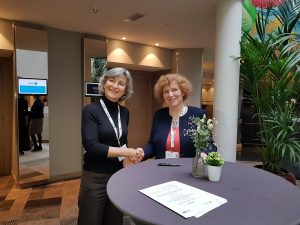In connection with the global restrictions against the spread of COVID-19 and in an effort to improve the situation for project investigators supported by the Czech Science Foundation (GACR), the GACR Presidium approved another set of transitional measures for grant projects.
The measures we have announced earlier can be found at this link.
Eligible costs in 2020
Travel costs
Mandatory tests for COVID-19 can be included among the eligible costs when traveling abroad due to a grant project implementation. The amount of the eligible costs will be reduced accordingly for the travels abroad that are not fully realised for the grant project implementation.
Postponed conferences
Eligible costs may include expenses incurred during the grant project implementation (i.e. advanced payments at the time of the project implementation) related to the active participation at the conference which was postponed due the COVID-19 situation and take place after the end of project implementation, and within maximum of one year.
Workload
Increasing the limit for changing the total work capacity of a team without a request
Changes in the team of professional co-workers, including a change of team´s aggregate workload up to maximum of 35 % in the contract-approved aggregate workload, including the workload change of principal investigator or co-investigator while maintaining the professional quality of the team, and except the change of principal investigator or co-investigator, are possible without a request in 2020 and do not require a contract amendment or a new decision on provision of targeted support, if it is not possible to work on the project according to the approved plan in the connection with COVID-19.
Reducing the limit of minimum workload of EXPRO project research team in 2020
If it is not possible to work on the project according to the approved plan in connection with COVID-19, the beneficiary may request workload reduction of individual team members on the project implementation according to Article 5.1. of Annex No. 4 of the Tender document.
Evaluation postponement/extension of the project implementation time
Evaluation postponement of final report
If the beneficiary has requested an evaluation postponement of final report with the submission deadline of the final report until 31 July 2020, the submission deadline of final report shall be postponed to 31 August 2020.
Extension of project implementation time
If it is not possible to work on project according to the approved plan in connection with COVID-19, the beneficiary may request an extension of the project implementation by six months. To finance the costs incurred at the time of extension, the beneficiary will use unused funds in 2020, which GACR in accordance with the relevant Tender Document allows to draw in the following period.
GACR already allows, in accordance with the wording of Decree No. 367/2015 Coll., On the principles and deadlines for financial settlement of relations with the state budget, state financial assets and the National Fund (Decree on Financial Settlement) to transfer and draw unused targeted support to following years of project implementation in an unlimited amount. Thus, GACR already allows the funds provided according to the project proposal in one of the previous years of project implementation to be used in the following years of project implementation.
Confirmation of completion of doctoral study in JUNIOR STAR projects
Deadline extension for delivery of confirmation of completion of doctoral studies for JUNIOR STAR grant projects
Deadline for sending confirmation of Ph.D. (or equivalent) of the applicant according to Article 3.1. para. 5 of Tender Document for grant projects JUNIOR STAR – 2021 is extended until 15 December 2020. This measure applies to cases where due the complications caused by the adoption of measures to prevent the spread of COVID-19 it will not be possible to complete the study on time and thus provide the confirmation of Ph.D. degree until 10 October 2020.


